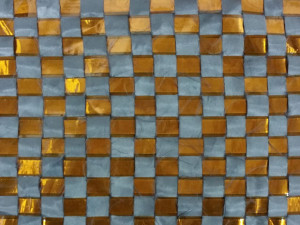 Winds at high altitudes are better energy sources that those near the ground because they are faster and more consistent. Many groups are experimenting on floating turbines, kites, sails, and winged craft to tap this energy which ground-based turbines are unable to reach. These floating technologies can convert mechanical energy into electricity through the effect of static electricity.
Winds at high altitudes are better energy sources that those near the ground because they are faster and more consistent. Many groups are experimenting on floating turbines, kites, sails, and winged craft to tap this energy which ground-based turbines are unable to reach. These floating technologies can convert mechanical energy into electricity through the effect of static electricity.
Professor Shong Lin Wang of Georgia Tech in Atlanta proposed the use of a piece of fabric to harness wind power. He further explains that the flag is low cost and its easy scalability makes it a competitive option against other airborne wind power technologies.
The science behind the effectiveness of the flag is the triboelectric effect. The triboelectric effect states that when the surfaces of two different materials touch and separate, their electrons transfer from one to the other, which builds up  opposite charges on the two surfaces. This reaction leads to the creation of a voltage that can drive electric current.
opposite charges on the two surfaces. This reaction leads to the creation of a voltage that can drive electric current.
Professor Wang’s group already made several generators produce electricity the flag is their recent invention. The flag is made by weaving two kinds of fabric strips with the width of 1.5 centimeters and a length of 30 centimeters. They weft is a polyester textile belt with nickel coating and the warp is a copper film coated with polyimide plastic. The nickel belts are then connected together by a copper tape to form one electrode; the copper belts, on the other hand, are connected to the electrodes. The flag weighs about 15 grams, can be folded, bent and twisted.
The flag generates power when the two fabrics will repeatedly touch and separate from each other. Given the wind speed of 22 meters per second, the flag can produce a maximum of around 40 volts and 30 microamperes. Three flags connected in parallel can produce enough power to light up 16 commercial LEDs.